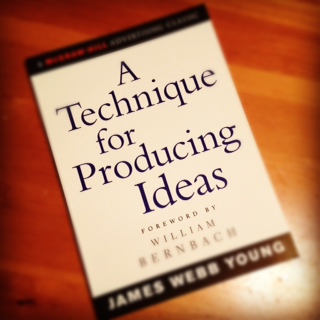This week I had the opportunity to speak with a group of pastors about creativity. I know, I know. The word “sermon” has bad connotations in modern American society. But this is a group of guys who really wants their people to pay attention and be engaged in the saving message of the Gospel.

As I prepared for the presentation I poked around my library of books so that I could share some resources with the group. I discovered that I have quite a growing collection of written materials pertaining to creativity and the creative process. The pastors asked if I would share a list of these resources with them.
It occurred to me that if they wanted to be enlightened by these resources, you might want to as well. So here is a list, in no particular order, of books and materials that I have found to be helpful in my creative journey. If you are interested in purchasing any of them, you can just click the link and it will take you right to the place where you can get your own copy.
I promise that reading these books will enhance your creativity, whether you are a pastor, writer, teacher, fundraiser, non-profit executive…or whatever you happen to be. Check these out:
- A Technique for Producing Ideas, by James Webb Young. Originally written as a presentation for advertising people, this classic applies to anyone searching for a formula for producing ideas. It’s simple…but I warn you it’s not easy.
- Caffeine for the Creative Mind, by Stefan Mamaw and Wendy Lee Oldfield. Here are 250 exercises to stretch your brain and get the creative ideas flowing.
- Poke the Box, by Seth Godin. If you’re having trouble starting, heres a great little book from uber-blogger, Seth Godin. You’ll read it in one sitting and refer to it over and over again.
- The War of Art, by Steven Pressfield. The subtitle of this book is “Winning the Inner Creative Battle.” Every creative person knows that battle. “The Resistance” does not want you to create. Here is an excellent treatise on overcoming that creative battle. Every communicator or creative of any kind should read this at least three times.
- Do the Work, by Steven Pressfield. This “sort of” sequel to The War of Art is an excellent follow-up. The back cover of this little book says: “A child has no trouble believing the unbelievable nor does the genius or the madman. It’s only you and I, with out big brains and our tiny hearts, who doubt and overthink and hesitate.” Read it. You’ll love it.
- Making Ideas Happen, by Scott Belsky. Sometimes coming up with ideas isn’t the hard part. Sometimes it’s actually putting those ideas into practice and making them happen. Belsky has studied creatives for years, and provides proven techniques to make sure that your ideas are turned into action.
- Made to Stick, by Chip and Dan Heath. The Heath’s studied some urban legends, and figured out why they stuck around, even though they are untrue. How about your message? How do you get it to stick? Here are some fantastic ways to do just that.
- The Creative Habit, by Twyla Tharp. Twyla Tharp is one of the most famous and hardest-working choreographers of our day. But you certainly don’t have to be a dancer to get a great deal out of this book to enhance your creativity. Tharp gives great exercises for you to use when you need that creative spark.
- The Collaborative Habit, by Twyla Tharp. Sometimes the creative habit is done within the context of teams. This book is an excellent map for finding your way through creative collaborations in a harmonious, productive way.
- Thinkertoys, by Michael Michalko. This is “a handbook of creative-thinking techniques.” It helps you to “rethink the way you think.” The book includes hundreds of hints, tricks, tips, and puzzles. Enjoy!
There’s a start to my list. What books can you suggest for me?








